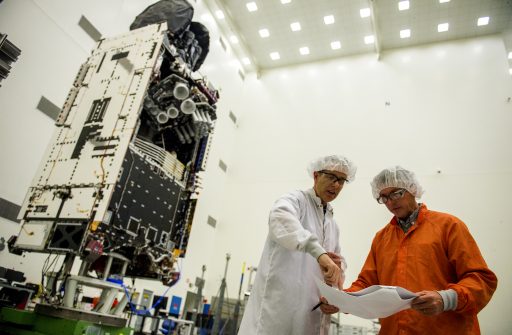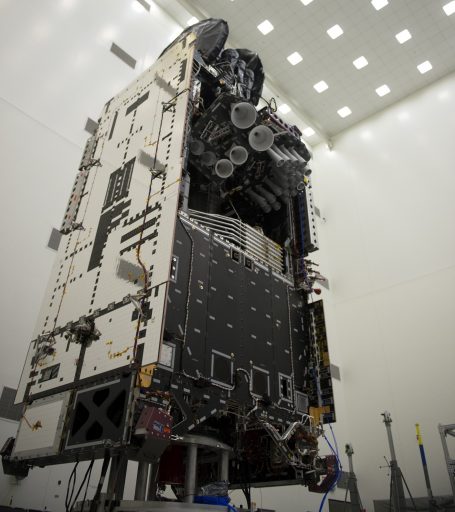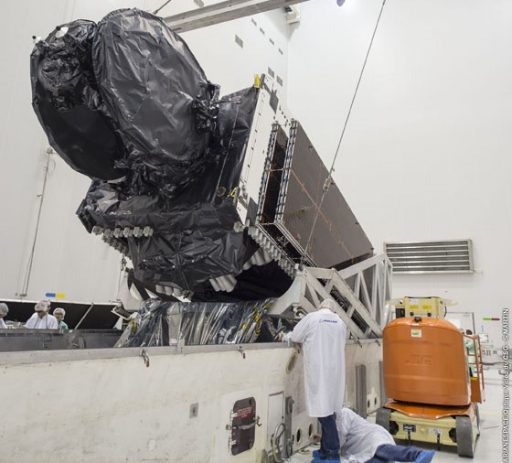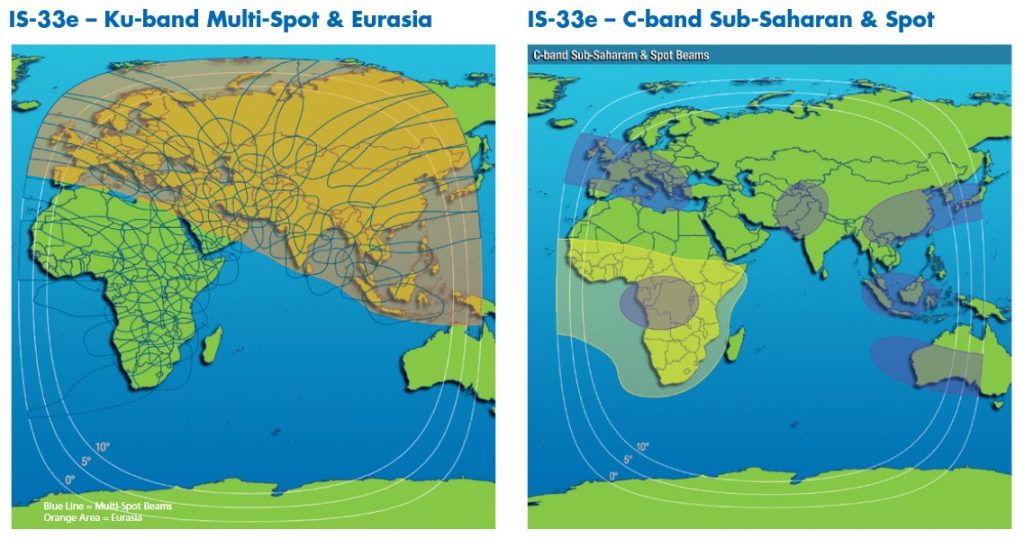Intelsat 33e

Intelsat 33e is one of two Intelsat communications satellites launching on an Ariane 5 rocket in August 2016 to join Intelsat’s fleet of satellites in Geostationary Orbit delivering a variety of communications services on the commercial market.
Built by Boeing Space Systems based on the flight-proven BSS-702MP satellite platform, Intelsat 33e carries a high-throughput C- and Ku-Band payload. The satellite will operate from 60° East in Geostationary Orbit, replacing the Intelsat 904 spacecraft launched in 2004 and approaching the end of its service life.
Intelsat 33e is the second in the Intelsat Epic architecture that is promised to deliver global high-throughput services utilizing C-, Ku- and Ka-Bands, a combination of wide beams and spot beams as well as frequency reuse to provide a high degree of flexibility to customers.

The Intelsat 33e satellite combines high-throughput Ku-Band spotbeams and C-Band wide-beams to meet a growing demand for carrier-grade telecom, enterprise services and aeronautical connectivity. Its payload generates spot beam coverage over Europe, Africa, the Middle East and Asia while the C-Band system covers high traffic centers in Europe, Central Africa, the Middle East and Australia.
A global C-Band beam delivers coverage to Sub-Saharan Africa and a wide Ku-Band beam covers Europe, the Middle East and Asia.
The satellite’s Ku-Band system has a combined bandwidth of 9194 MHz while the C-Band system covers a 2670 MHz bandwidth.
Intelsat 33e is based on Boeing’s BSS-702 MP configuration, the medium power version of the 702 satellite platform. The satellite minimizes the larger 702HP satellite bus, suitable for communications payloads requiring 6 to 12kW of power.
Intelsat 33e has a launch mass of 6,600 Kilograms and measures 7.9 by 3.8 by 3.2 meters in size when in its stowed launch configuration.
Electrical power is generated by two deployable solar arrays and stored in Li-Ion batteries with dedicated avionics conditioning the satellite power bus that supplies electrical power to the various bus systems, the electric propulsion system and the satellite payload. Power is stored in dual Lithium-Ion batteries and dedicated avionics regulate the main power bus of the spacecraft to provide power to all subsystems of the satellite bus and the communications payload.

The satellites use a state of the art attitude determination and control system utilizing star trackers and Earth sensors for precise attitude determination and reaction wheels for accurate pointing.
The satellite bus is typically equipped with a 490-Newton bipropellant apogee motor for the climb into Geostationary Orbit.
In addition, the satellite uses four axial 22-Newton Thrusters and four radial 10-Newton thrusters for smaller orbit adjustments, drifting in Geostationary Orbit and attitude maneuvers. BSS-702 can also support electrical propulsion systems.
Ordered from Boeing in 2013, Intelsat 33e is built for the industry-standard operational service life of 15 years.

